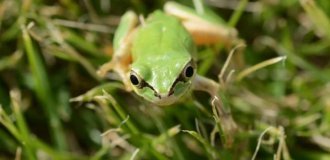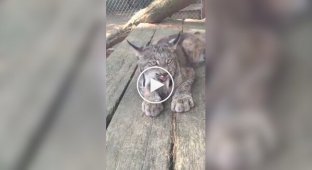Spectacled eider: an exotic beauty from the depths of Siberia (8 photos)
The Spectacled Eider, or Fischer's Eider, is an unusual bird from the most common duck family. Spectacled Eiders grow to an average of 1.6 kilograms, slightly more than a standard wild mallard. From a distance, they even look alike: the same brown-motley coloring in females and white-green-black in males. 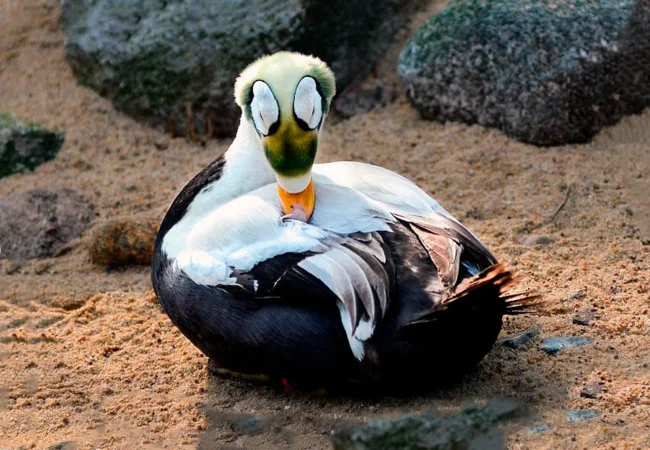
I see the glasses. But where are the eyes?
But if you manage to get closer before they fly away, you will immediately notice the highlight of the species - stylish white glasses around the eyes and a "puffy" feathered face. Jokes aside, but why do birds need such decorations? 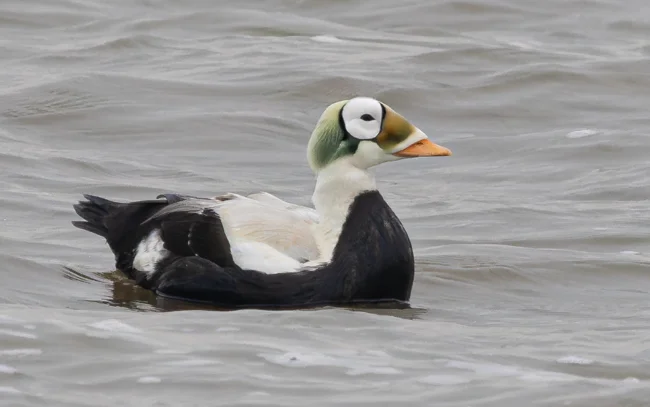
It seems that this eider suspects me of all mortal sins.
The answer to this question is hidden somewhere in the vast expanses of the Arctic Ocean. And this is not a creative exaggeration - we really do not know for sure why eiders need glasses. Less likely, they protect the face from frosty northern winds, and more likely - they play a role in mating games. But no ornithologists held a candle and did not observe the mating games of Fischer's eiders, because where to look for them in the middle of the ocean - the birds spend almost their entire lives in the ocean and form pairs there. 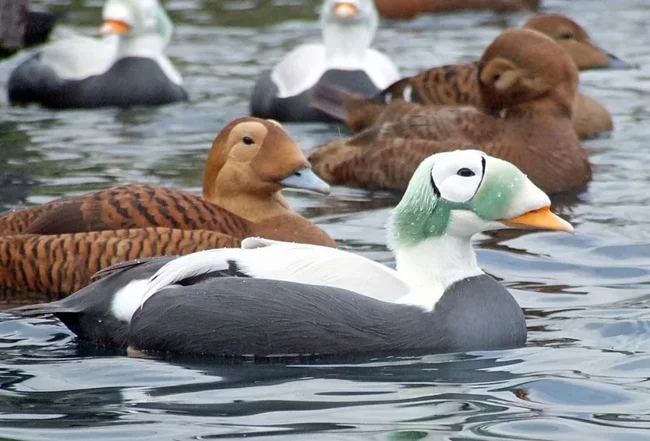
Hello, beauty, are you flying to the mainland to build a nest?
It's not that important, because the most difficult part of their life begins on the mainland, when couples return to hatch chicks. Eiders nest on the coasts of Alaska and northeastern Siberia. This choice of geolocation makes spectacled eiders one of the least studied birds in the world, because on the mainland, birds can be observed only 1-3 months a year. And they spend this time on practically uninhabited and poorly studied lands. 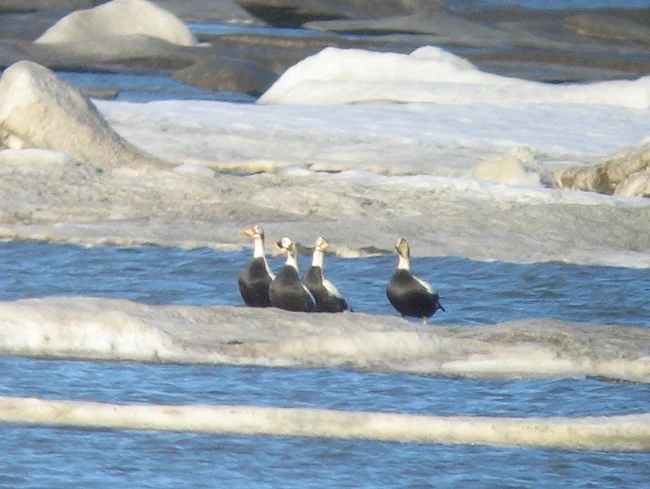
Outside the mating season, the birds do not appear on land at all. Only occasionally can you see them resting on coastal ice.
Eiders return to the mainland in May-June and immediately begin to look for a place for a nest, and this is a very difficult task. The northern regions are harsh, and eiders are peaceful, intelligent birds (look, they even wear glasses!) and are not able to protect their clutches from the ubiquitous northern foxes. That's why they try to settle closer to colonies of terns and gulls, because more aggressive birds perfectly protect their nests from four-legged marauders. 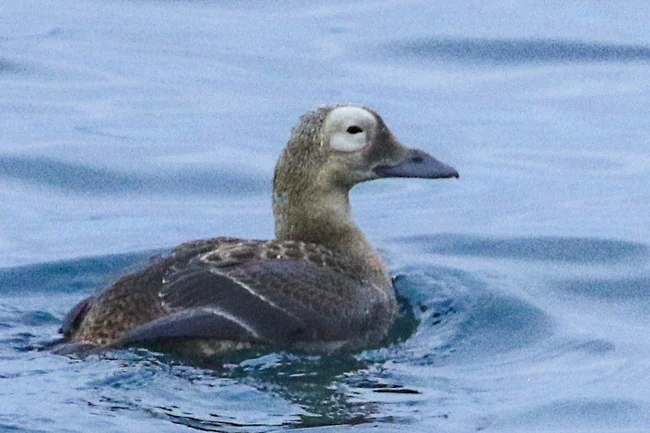
A young male spectacled eider looks like he wrote his term paper in one night.
But even here, everything is not so simple. The fact is that the aggression of these birds extends to everything that moves in their field of vision. If the eiders build their nest too close to the colony, sooner or later they will provoke the winged bandits to attack. And they will destroy the nest, leaving the defenseless family to cry over broken eggs. For spectacled eiders, their entire life on the mainland is between a rock and a hard place. At least, that explains why they are so reluctant to return to the mainland. 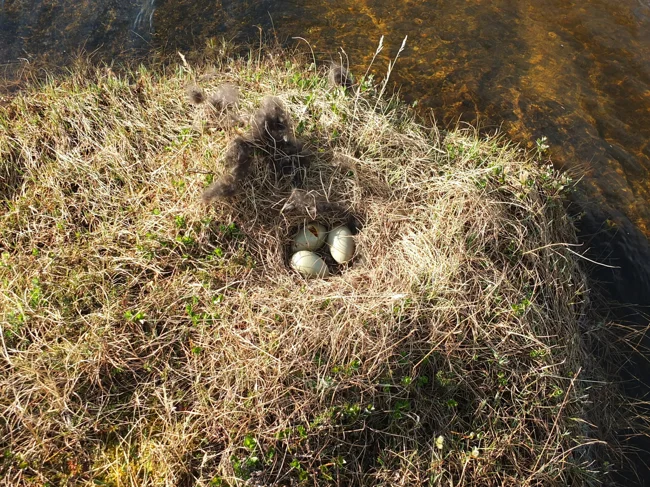
An eider nest, ruined. One egg was clearly pierced by a blow from someone's impudent beak.
As if these problems weren't enough, the male leaves the female immediately after building the nest and laying the eggs. She has to deal with all the seagulls and arctic foxes on her own. However, there is a silver lining to this barrel of tar: eider chicks develop very quickly. In fact, the female needs to tremble over the nest for a little less than a month while the eggs incubate. But the chicks can walk and get food on their own from birth. Therefore, the female can calmly take her offspring to marshy lowlands and river valleys, where the little ones will collect seeds, nibble young grass, catch mollusks and aquatic insects. 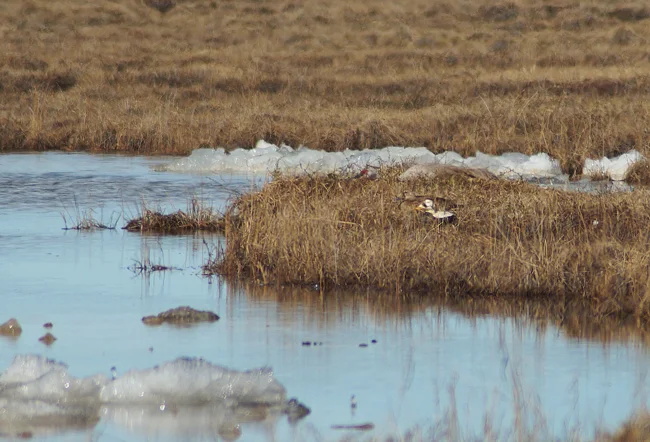
In general, it is understandable why the male does not participate in raising the children. His parrot outfit is visible from afar, but it is very difficult to notice the female.
After 2 months of training in finding food, the unsightly chicks will turn into the most skilled divers in the entire duck family, and their wings will become so strong that yesterday's chicks will be able to fly at a speed of 100 km/ h! For reference: light and long-winged pigeons fly slower, even special postal breeds do not accelerate above 80 km/ h! 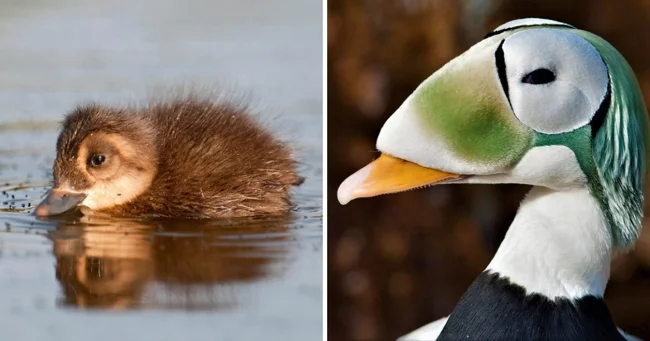
It's hard to believe that this cute baby will grow up to be such an imposing man!
There is another piece of good news: despite all the difficulties of life, spectacled eiders are not threatened with extinction. Their population is stable precisely because of their inaccessibility. Even poachers have a hard time getting to the birds' nesting sites, and there are no fools at all to go out into the ocean to shoot ducks!









